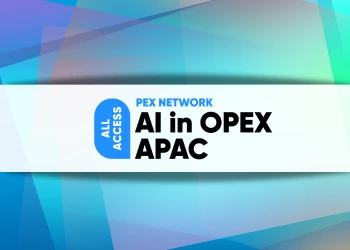Kate Carruthers, Chief Data & Analytics Officer, University of New South Wales Shares her Framework for Identifying Data Value
Establishing Data ROI: Problems and Solutions
Add bookmark
We invited Kate Carruthers, Chief Data & Analytics Officer, University of New South Wales to share and 2 members of her team share their thoughts on “Identifying Data Value: A Case Study” at our recent Data ROI event. You can watch her full session here or read on for a few highlights.
Mastering the Art of Strategic Prioritization
Problem: With all of the competing priorities that exist within organizations, how do you select which projects to work on first? As Kate explains, “We have a mandate to provide data across the organization and one of the big things for us is providing as much value to as many people in a single piece of work as possible.
However, we're constantly making trade-off decisions between what will deliver maximum value across the organization and what won't. And there's a lot of people asking us to do a lot of things, and we have scarce resources as does every data team, so we constantly have to make those trade-off decisions, but we need to make it fairly and equitably.
There are some people who just lose out because they have very niched requests. There are some people who win with niche requests, just because they're very senior in the organization or their niche request is actually very significant, but won't benefit a lot of people. So there's a whole lot of trade-off decisions that we have to make.”
Solution: According to Amanda Chi, Manager of Data Platforms who oversees this endeavor, “First, every single week I talk to a scrum master to look into the backlog and then prioritize which are most important. For example, we look at their strategic value, what do they need and what is the due date. And then, after that, we'll talk to Kate saying that ‘This is the backlog and is there anything other than this project that needs to be prioritized?’
That's what we always do every single week. But we do have two week sprint planning, so we plan it according to how many people in the team available to do the work. And then we'll do estimation as well on how long it takes to do each task.”
Keeping a Cap on Cost
Problem: In a word, costs. We don’t have to tell you, data science and analytics services are high-value investments whose costs and benefits can be difficult to estimate in advance. However, generally speaking, the larger the algorithm and data sets required, the more expensive the project will be.
Solution: According to Kate, “we all use the Azure Stack and we have all the new technology, and some of them that are just been released and we don't know what it's going to cost us and what it's going to perform. So we try with pilot and we keep monitoring the costs, making sure the cost one go overboard. And we can track it daily and we can track who's using it, how many users that use the resources and just making sure that we utilize it in a smart way.
The other thing is, because it's cloud and everything you do costs some on the cloud. If you've moved from capital expenditure to operational expenditure, now it's an ongoing cost. And there's some stuff that costs a lot in compute, but it's really essential modeling for the business. We're starting to have that cost discussion now and say, "Well, if you want these models that you want us to provide the analytical insights for you, it costs money. We can stop doing it for you. If we just don't do it for you, we won't incur any expense". So people are starting to now realize that we've shifted from CapEx to OpEx and it can be a difficult conversation from a cost perspective.”
The Key to Resilience? Your People.
Problem: the Future is unpredictable. If the past year has taught us anything, it’s that both life and business are profoundly unpredictable. Even 18 months later, how, when and if the global pandemic will end is still uncertain. Furthermore, from the increasing occurrence of natural disasters to impending international conflicts, things may never “go back to normal.”
Solution: Building a resilient organization starts with the acceptance of “the only constant is change. Kate also adds, “The important thing for us is we maintain that the team is pretty good, that everybody is okay. But we look after our people because without the people, none of the technology matters a damn. Amanda, you might like to talk about some of the things that we do to look after our people. I don't think our team are really unhappy about working from home. I must say.”

























